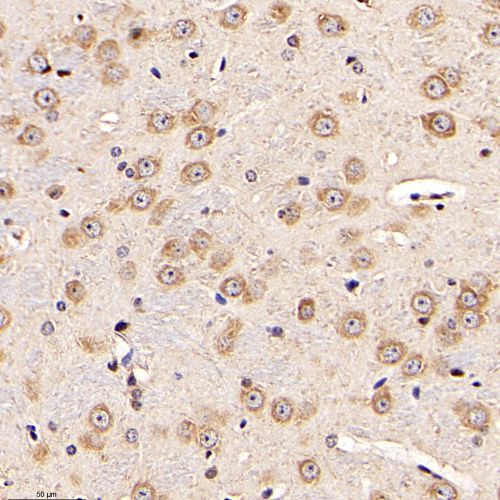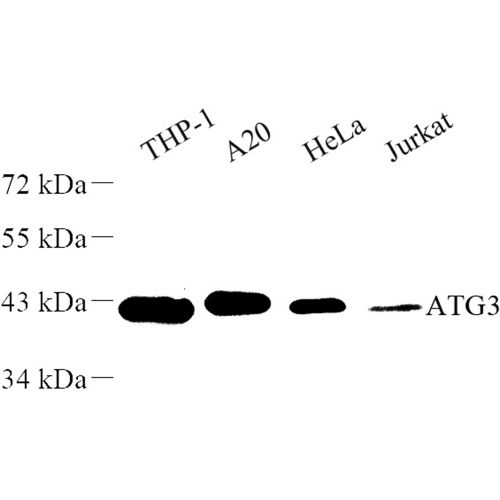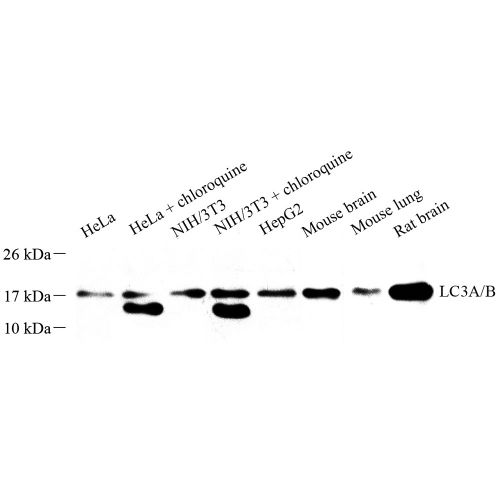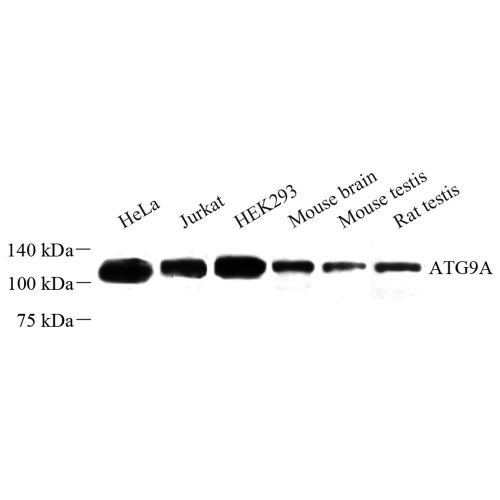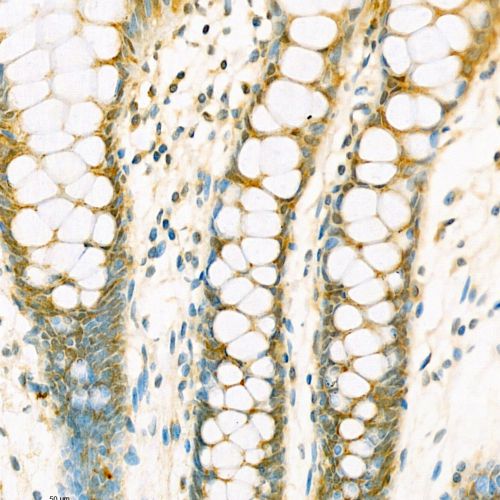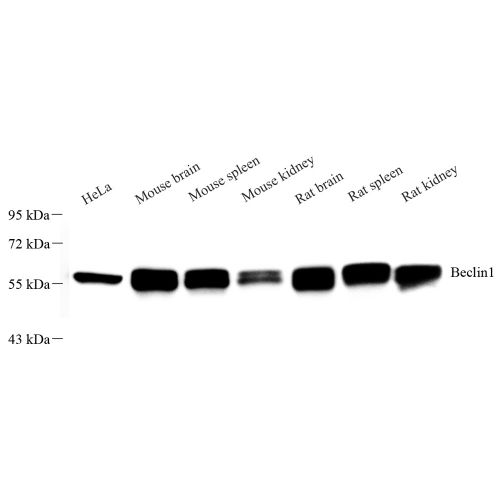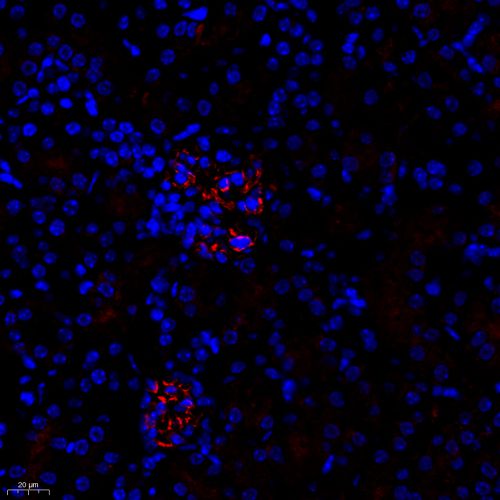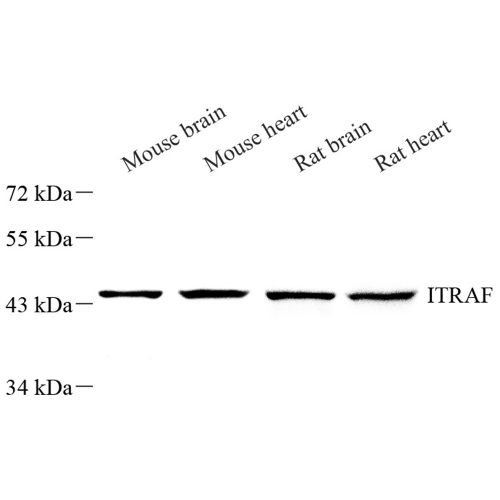Product Information
|
Description |
ATG101 rabbit polyclonal antibody |
|
Protein full name |
Autophagy-related protein 101 |
|
Synonyms |
Atg101, Atg13-interacting protein, C12orf44 , Chromosome 12 open reading frame 44 , FLJ11773 , OTTHUMP00000241687 |
|
Immunogen |
Recombinantproteincorrespondingto Mouse ATG101 |
|
Isotype |
IgG |
|
Purity |
Affinity purification |
|
Subcellular location |
Cytoplasm |
|
Uniprot ID |
Q9D8Z6, Q6AY69 |
Applications
|
Applications |
Species |
Dilution |
Positive Sample |
|
IHC/IF |
Mouse, Rat |
1: 500-1: 1300 |
brain, spleen |
Background
ATG101 is involved in autophagy, the process of bulk degradation of cellular proteins through an autophagosomic-lysosomal pathway is important for normal growth control and may be defective in tumor cells. ATG101 is a recently discovered protein that stabilizes ATG13, another autophagy protein that forms a complex with the mammalian homologs of ATG1, ULK1 and ULK2, and with FIP200. This complex is a target of TOR phosphorylation under normal conditions inhibition of TOR by rapamycin or leucine deprivation leads to dephosphorylation of ATG13, ULK1 and ULK2, which then leads to autophagy.
Images
|
|
Immunohistochemistry of paraffin embedded mouse brain using ATG101 (GB111681) at dilution of 1:650 (300x lens) |
|
|
Immunohistochemistry of paraffin embedded rat brain using ATG101 (GB111681) at dilution of 1:650 (300x lens) |
|
|
Immunofluorescence of paraffin embedded rat spleen using ATG101 (GB111681) at dilution of 1:650 (460x lens) |
Storage
| Storage | Store at -20 ℃ for one year. Avoid repeated freeze/thaw cycles. |
| Storage Buffer | PBS with 0.02%sodium azide,100 μg/ml BSA and 50% glycerol. |
NOTE:
1.This product is intended for research only.
2.This product is recommended to dilute with the Primary Antibody Dilution Buffer (G2025)


